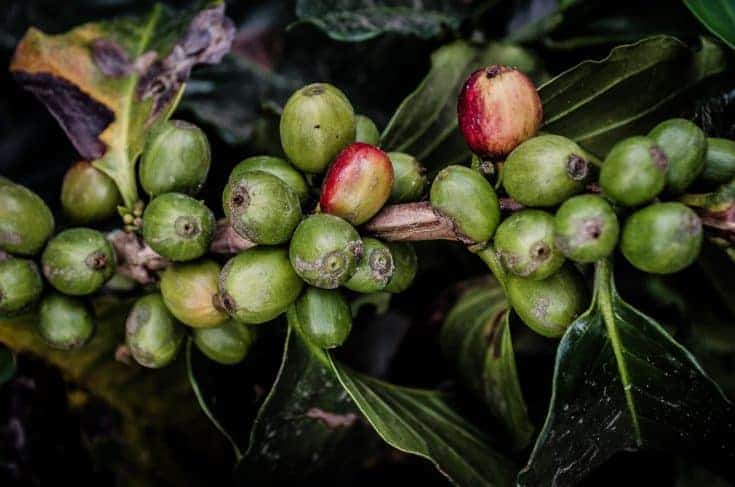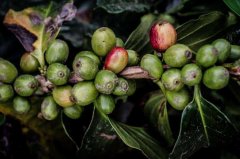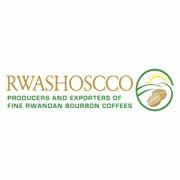History of coffee in Rwanda, one of the largest coffee growers in the world. Introduction to small coffee farms.
Rwandan coffee has both a colorful history and an exhilarating taste of . It is a rare and excellent coffee producing area.
But it is true that the history of coffee in Rwanda is not as long as we think, and the historical development of coffee in Rwanda can even be described as twists and turns. 、

The first coffee plants did not arrive in Rwanda until the early 20th century, but it took another 30 years for Rwandan coffee production to take off. At first, although there was quantity, there was still a lack of quality. The type of coffee beans grown in Rwanda is quite low, especially because of the stringent requirements of the colonial government before the country gained independence in the middle of this century.
Even after independence, the coffee industry was affected by the crises in both the coffee world and Rwanda in the 1990s. By the turn of the millennium, the coffee industry had collapsed.
Today, Rwanda is the ninth largest Arabica coffee producer in Africa, with about 450000 small farms with an average area of less than 1 hectare (about 165 coffee trees per coffee farmer), with a total coffee cultivation area of about 28000 hectares.
Coffee is more like a culture in African countries than we are used to in the West, and rituals and socializing are key components of any party. The industry values the value of its crops-hope ("Ikizere"), vision ("Ikerokoza"), Ishema ("pride")-to guide people on how to work together.

But instead of giving up the metaphorical ghost of coffee, farmers began to turn to the world of boutique coffee. The formulation of a national coffee strategy has reshaped their coffee industry. In the past 20 years, Rwanda has grown into one of the 30 largest coffee growers in the world. Today, Rwandan coffee exports generally amount to tens of millions of pounds a year-that is, when production is not disturbed by domestic problems. Most of these products come from small farms, not from larger coffee farms.
Most of the plantations in the country are quite high, usually between 4000 and 6500 feet above sea level. This provides a good high-altitude area for coffee plants and is very suitable for producing high-quality coffee beans. Of all these farms, 95% of coffee plants are not just Arabica coffee-they are the best varieties of Rwandan bourbon beans.
The local growing season usually begins in September or October and lasts until harvest between March and July. In these months, the harvest tends to peak in May.
Important Notice :
前街咖啡 FrontStreet Coffee has moved to new addredd:
FrontStreet Coffee Address: 315,Donghua East Road,GuangZhou
Tel:020 38364473
- Prev

History of coffee in Rwanda, one of the largest coffee growers in the world. Introduction to small coffee farms.
Rwandan coffee has both a colorful history and an exciting taste. It is a rare and excellent coffee producing area. But it is true that the history of coffee in Rwanda is not as long as we think, and the historical development of coffee in Rwanda can even be described as twists and turns. The first coffee plants arrived in Rwanda as late as the early 20th century, but 30 years later, Rwandan coffee
- Next

Characteristics and Story of Export Coffee with Fair Trade Certification of characteristic Coffee Brand Cooperative in Rwanda
RWASHOSCCO Rwanda Little holder Specialty Coffee is a farmer-owned company focusing on the marketing, export and roasting of the best quality coffee beans in Rwanda. RWASHOSCCO is a farmer-owned marketing, export and baking company. RWASHOSCCO was founded in 2005, when the PEARL/USAID project was coming to an end. The idea comes from Timothy Schilling.
Related
- Detailed explanation of Jadeite planting Land in Panamanian Jadeite Manor introduction to the grading system of Jadeite competitive bidding, Red bid, Green bid and Rose Summer
- Story of Coffee planting in Brenka region of Costa Rica Stonehenge Manor anaerobic heavy honey treatment of flavor mouth
- What's on the barrel of Blue Mountain Coffee beans?
- Can American coffee also pull flowers? How to use hot American style to pull out a good-looking pattern?
- Can you make a cold extract with coffee beans? What is the right proportion for cold-extracted coffee formula?
- Indonesian PWN Gold Mandrine Coffee Origin Features Flavor How to Chong? Mandolin coffee is American.
- A brief introduction to the flavor characteristics of Brazilian yellow bourbon coffee beans
- What is the effect of different water quality on the flavor of cold-extracted coffee? What kind of water is best for brewing coffee?
- Why do you think of Rose Summer whenever you mention Panamanian coffee?
- Introduction to the characteristics of authentic blue mountain coffee bean producing areas? What is the CIB Coffee Authority in Jamaica?

